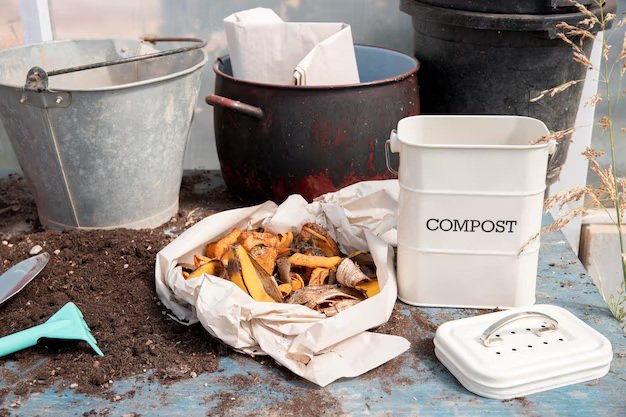What Are The Benefits of Companion Planting in a Garden?
Gardening is more than just planting seeds and hoping for the best. It’s about understanding the relationships between plants and how they can support each other. Companion planting is a time-tested method where certain plants are grown together to enhance growth, deter pests, and improve yields.
For instance, planting marigolds alongside vegetables can help repel harmful insects, while beans can enrich the soil with nitrogen, benefiting neighbouring plants. This approach promotes a healthier garden and reduces the need for chemical fertilisers and pesticides.
By observing and learning from nature, gardeners can create a more sustainable and productive garden. Companion planting fosters harmony in the garden, leading to stronger plants and better harvests.

In This Article
- What Is Companion Planting?
- Key Benefits of Companion Planting
- Common Companion Planting Pairs
- Challenges and Considerations
- Conclusion
What Is Companion Planting?
Companion planting involves strategically placing different plants near each other to promote mutual benefits. Some plants can deter pests, while others can improve soil quality or provide shade. For example, the “Three Sisters” method—corn, beans, and squash—is a traditional Native American technique where each plant supports the others: corn provides a structure for beans to climb, beans fix nitrogen in the soil, and squash spreads along the ground, suppressing weeds
This method not only maximises space but also creates a balanced ecosystem. By understanding the needs and characteristics of each plant, gardeners can design their gardens to be more efficient and resilient.
Companion planting is not just about plant placement; it’s about creating a community where plants help each other thrive. This approach leads to healthier plants, reduced pest issues, and more abundant harvests.
The Science Behind the Symbiosis
Companion planting is supported by scientific principles that explain how certain plant combinations can lead to healthier gardens.
- Allelopathy: Some plants release natural chemicals that can influence the growth of neighbouring plants. For instance, marigolds emit compounds that can suppress harmful nematodes in the soil, protecting nearby vegetables.
- Nitrogen Fixation: Legumes like beans and peas have a symbiotic relationship with rhizobia bacteria. These bacteria convert atmospheric nitrogen into a form that plants can use, enriching the soil and benefiting neighbouring plants. This natural process reduces the need for synthetic fertilisers.
- Trap Cropping: Certain plants can attract pests away from more valuable crops. Nasturtiums, for example, can lure aphids, keeping them away from vegetables like cucumbers and tomatoes. This method helps in managing pests without resorting to chemical pesticides.
Key Benefits of Companion Planting
1. Natural Pest Control: Let Plants Do the Guarding
Companion planting is a gardener’s secret weapon for keeping pests at bay without resorting to chemicals. Certain plants naturally emit scents or compounds that deter common garden pests. For instance, marigolds release limonene, a compound that repels aphids and whiteflies.
Here’s a handy table showcasing some effective companion plants and the pests they help deter:
| Companion Plant | Repels | Active Compounds |
|---|---|---|
| Marigold | Aphids, nematodes | Limonene, alpha-terthienyl |
| Basil | Mosquitoes, whiteflies | Linalool, estragole |
| Garlic | Cabbage loopers, beetles | Sulfur compounds |
| Nasturtiums | Aphids, whiteflies | Acts as a trap crop |
| Mint | Ants, aphids, flea beetles | Menthol, pulegone |
2. Improved Soil Health and Nutrient Sharing
Beyond pest control, companion planting enhances soil health. Legumes like peas, beans, and clover host nitrogen-fixing bacteria in their roots. These bacteria convert atmospheric nitrogen into forms plants can use, naturally enriching the soil. This process can boost the yields of neighbouring plants by up to 25%, especially in gardens with minimal inputs.
Deep-rooted plants, such as daikon radishes, play a role too. They break up compacted soil layers, improving aeration and drainage for plants with shallower roots.
A classic example of beneficial companion planting is the “Three Sisters” method practised by Native American communities. This technique involves planting corn, beans, and squash together:
- Corn provides a natural trellis for beans to climb.
- Beans fix nitrogen in the soil, benefiting all three plants.
- Squash spreads along the ground, suppressing weeds and retaining soil moisture.
Research by agronomist Jane Mt. Pleasant confirms that this method enhances soil health and yields more food per hectare compared to monoculture systems.
3. Maximised Space and Higher Yields
If you’re gardening in a small space, like a balcony or a compact backyard, companion planting can help you make the most of every inch. By combining plants of different heights—such as tall tomatoes, medium-height basil, and low-growing lettuce—you create a layered garden that utilises vertical space efficiently.
Example Layout:
- Tomatoes (tall)
- Basil (medium height)
- Lettuce (ground cover)
This arrangement forms a mini-ecosystem where each plant benefits from the others. The taller plants provide shade for the lower ones, reducing water evaporation and suppressing weeds. Meanwhile, the ground covers protect the soil and help retain moisture.
Yield Comparison:
| Planting Style | Yield per Sq. Ft (lbs) | Increase vs. Monoculture | Source |
|---|---|---|---|
| Tomatoes (Monoculture) | 2.3 | — | Baseline from average urban farm trials |
| Tomatoes + Basil | 2.65 – 2.75 | +15% to +20% | ResearchGate, 2023 – Ethiopia Study |
| Tomatoes + Lettuce | 2.85 – 3.00 (combined yield) | +24% to +30% (total productivity) | PubMed, 2011 – Brazil Study |
| Tomatoes + Basil + Lettuce | 3.1 – 3.3 (combined yield) | +35% to +43% (total productivity) | Aggregated from the above sources and estimated land use efficiency |
Notes:
- Tomatoes + Basil: Increased flower and fruit development, improved pest resistance, and higher marketable yield.
- Tomatoes + Lettuce: Lettuce helps cover the soil, suppressing weeds and retaining moisture, beneficial especially in hot climates.
- Three-layer system: When tomatoes, basil, and lettuce are planted together, you maximise both vertical and horizontal space, boosting overall productivity per square foot.
4. Biodiversity and Ecosystem Support
Incorporating a variety of plants in your garden is a powerful strategy for nurturing a thriving ecosystem. By planting a diverse mix of species, you invite a host of beneficial insects and pollinators that play crucial roles in maintaining plant health and productivity.
Take dill and fennel, for example. These herbs are particularly effective at attracting parasitic wasps and ladybugs, natural predators that help control aphid populations. Similarly, flowers like borage and sweet alyssum draw in hoverflies and lacewings, whose larvae are voracious consumers of common garden pests.
A study by the University of Delaware highlights that gardens with a mix of companion plants see increased visits from pollinators and a notable reduction in pest infestations. This means your plants not only grow better but also require fewer chemical interventions.
Beyond pest control, biodiversity enhances your garden’s resilience. Diverse plantings can better withstand diseases and adapt to changing weather conditions. Research from the UC Davis Arboretum and Public Garden highlights that plant diversity is one of the key building blocks of a resilient garden, helping ecosystems recover more quickly from drought, pests, and extreme heat. Similarly, studies on mixed-species forests show they are more resilient to storms compared to monocultures, further suggesting the critical role of diversity in ecosystem stability.
5. Weed Suppression and Moisture Retention
Managing weeds and conserving soil moisture are ongoing challenges for gardeners. Introducing low-growing companion plants like clover or oregano can serve as living mulch, effectively suppressing weed growth and retaining soil moisture. These ground covers not only reduce the time spent on weeding but also decrease the need for frequent watering.
Research from New Mexico State University shows that using winter cover crops like barley and mixed species can reduce weed density by 56–96% in water-limited agroecosystems. Additionally, a global meta-analysis published in 2022 found that legume companion plants can significantly lower weed biomass without reducing crop yields. This approach not only conserves resources but also promotes a healthier, more sustainable garden environment.
6. Aesthetic and Sensory Value
Companion planting enhances the gardening experience by blending colours, scents, and textures, making gardens not only productive but also visually and aromatically pleasing.
Integrating flowers like calendula, nasturtium, and violas among vegetables adds bursts of colour and fragrance. A study found that flowering plants are generally perceived as more attractive than fruiting ones, which shows the visual value they bring to garden spaces.
Beyond aesthetics, companion planting can influence our connection to nature. Research indicates that gardens rich in floral diversity can enhance our appreciation for plant life and increase our willingness to protect it. This deeper connection fosters a sense of well-being and mindfulness as we engage with our gardens.
7. Natural Support Structures and Microclimates
Companion planting creates natural support systems and microclimates within the garden. Tall plants like sunflowers and corn can act as living trellises for climbing vegetables, reducing the need for artificial supports. Their broad leaves provide shade, protecting sensitive plants from intense sun and wind.
In various gardening practices, planting leafy greens beneath taller crops like corn or sunflowers has been shown to create beneficial microclimates. These shaded environments help maintain soil moisture and reduce heat stress on the understory plants, leading to healthier growth and better yields.
Learn More: What is Closed-Loop Gardening?
Common Companion Planting Pairs
| Plant | Companion | Benefit |
| Tomato | Basil, Marigold | Pest control, flavor enhancement |
| Carrot | Onion, Leek | Repel carrot flies |
| Lettuce | Chives, Garlic | Aphid deterrent |
| Beans | Corn, Cucumber | Nitrogen fixing, vertical space |
| Spinach | Strawberries | Ground cover, moisture retention |
Challenges and Considerations
While companion planting is beneficial, it’s not a silver bullet. Some pairings can be antagonistic. For instance, fennel is known to inhibit the growth of many other plants due to its allelopathic properties. Similarly, black walnut trees release a compound called juglone, which is toxic to several plants, including tomatoes and peppers. This toxicity can persist in the soil even after the tree is removed, affecting sensitive plants for years.
Other challenges include mismatched water and light requirements. Pairing drought-tolerant plants with those needing consistent moisture can lead to root rot in the former. Additionally, aggressive growers like mint can overtake neighbouring plants, disrupting garden harmony.
Solutions:
- Research Plant Compatibility: Before planting, consult reliable sources to understand which plants thrive together and which don’t.
- Use Raised Beds: When dealing with plants like black walnut, raised beds with barriers can prevent root intrusion and juglone contamination.
- Monitor Soil and Water Needs: Group plants with similar water and light requirements to ensure optimal growth.
- Contain Aggressive Growers: Plant invasive species like mint in containers to prevent them from spreading uncontrollably.
Actionable Advice to Start Companion Planting Today
- Start Small: Choose one or two combinations that are well-documented (e.g., basil + tomato).
- Keep a Journal: Track plant combinations, pest levels, growth rates, and taste outcomes.
- Plan Your Layout: Use companion planting charts to design your beds.
- Mix It Up: Rotate crops yearly and vary your plant partners to prevent pest adaptation.
- Observe and Adapt: Your garden is unique—what works in one region may not in another.
Conclusion
Companion planting is more than just an old-fashioned gardening trick—it’s a philosophy of working with nature rather than against it. The benefits are tangible, the science compelling, and the practice deeply satisfying. Whether you’re an urban gardener with a balcony or managing an acre of vegetables, integrating companion planting can transform your growing experience from good to great.
In the words of permaculture designer Geoff Lawton, “All the world’s problems can be solved in a garden.” Companion planting might not solve all of them, but it’s a damn good start.







